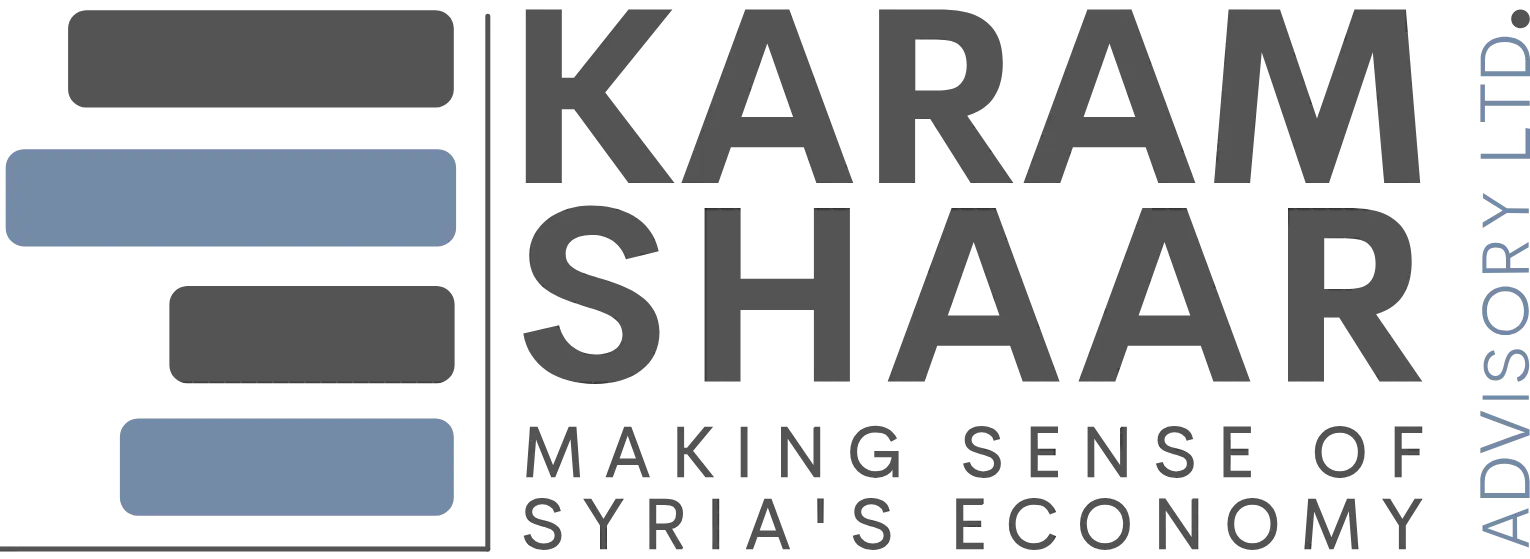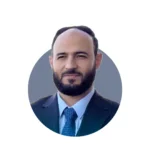Interview: Azzam Al-Gharib, Governor of Aleppo
- Issue 12
Vision and Administrative Transparency
Q: What is your personal vision and your top priorities for the city during your term? What message would you like to convey to the people of Aleppo at the beginning of your tenure?
Safety above all, Aleppo – for the sake of our children.
Q: Could you describe how the governorate’s administrative structure functions under Law 107 of 2011, and what steps you plan to take to improve clarity of responsibilities and performance levels?
The governorate’s work is fundamentally based on Law 107 of 2011 on Local Administration, but it remains highly centralized. Citizens do not know where responsibilities begin or end, as the mandates of directorates overlap and remain unclear. At times, responsibilities and tasks are altered depending on the personality, inclination, or will of the official in charge, regardless of what is written on paper.
In the future, we seek to develop the administrative structure toward decentralization—clarifying responsibilities and distributing them according to specialization—in order to achieve the vision we aspire to and to provide better services to citizens. Flexibility will remain necessary until we reach the best possible outcome. Reviewing existing procedures and structures is indispensable if we are to overcome the obstacles that stand in the way of improvement.
Financial Management and Development
Q: What mechanisms are being used to manage the governorate’s resources, and how will the Sovereign Fund contribute to reconstruction and development in Aleppo?
The governorate is working in continuous coordination with the Syrian Investment Authority to map out an investment plan. The newly established Sovereign Fund will play a major role in the next phase of reconstruction, particularly given the strong and attractive opportunities available in Aleppo.
Q: What measures has the governorate taken to increase transparency in funding and expenditures, and to strengthen trust with citizens?
The governorate of Aleppo has launched several initiatives highlighting the importance of contributions from local companies and organizations in supporting public services and the community. For each initiative, plans for expenditures and contributions were set out under the supervision of a newly formed Council for Integrity, tasked with overseeing the process. This strengthens the role of local communities in monitoring, in line with the governorate’s vision. In this way, the principle of transparency is reaffirmed, trust between beneficiaries and contributors is increased, and all spending is ensured to be open and in the interest of citizens.
Q: What mechanisms are used to identify the development needs of different areas, and how do civil society and local councils contribute to this process?
The process of identifying area needs follows an objective and inclusive methodology:
- Collecting official data – service directorates (municipal, education, health, electricity, water) prepare lists of needs using unified forms and standards that set out priorities, constraints, and required interventions.
- Involving local communities – sessions with neighborhood committees and local notables, along with surveys, identify the most pressing priorities from the perspective of civil society.
- Analysis and integration – the Directorate of Planning reviews the data, compiles it into a comprehensive file of projects and needs, ranks priorities according to criteria, and studies complementarities between projects in coordination with civil society and official bodies.
Local councils, especially municipalities, play a key role by raising needs and conducting comprehensive surveys in their areas, ensuring rural priorities are also included in planning.
Reconstruction and Infrastructure
Q: Recently, a campaign was launched alongside the “Syrian Development Fund.” How will these initiatives be integrated to benefit Aleppo, and what mechanisms will ensure transparent allocation across priority projects?
The Syrian Development Fund acts as a unifying umbrella that supports all initiatives and constitutes the basis for integration and coordination of large, cross-governorate development projects. In Aleppo, the governorate’s initiative aims to mobilize efforts among governorates, local communities, and all sectors to contribute to the city’s reconstruction. This includes integrating resources and ensuring transparency in distributing them across priority projects, with oversight mechanisms that guarantee efficiency. The ultimate goal is to pool capacities and expand development opportunities so that Aleppo can benefit to the fullest in its reconstruction and revival.
Q: We recently observed the signing of a memorandum of understanding worth 10 million USD to rehabilitate Aleppo’s main roads. What are the project details, the implementation timeline, and which areas of the city and countryside will be covered?
The memorandum of understanding, valued at 10 million USD, was signed between the governorate and an international humanitarian organization.
It covers the maintenance and rehabilitation of the city’s main roads connecting Aleppo with the countryside. Implementation has already begun along three main axes:
- Azaz – Aleppo
- Darat Izza – Aleppo
- Atarib – Aleppo
Other entrances to the city will also be included later in the project, God willing. According to the agreement with the implementing company, the project is expected to be completed before the end of the year.
Strategic Projects and Property Rights
Q: The Haydariyah project, estimated at USD 40 million, is considered an important model for real estate development. What guarantees are being provided to original property owners to safeguard their rights, how will they be compensated, and what is the financing model?
The Haydariyah project is the first pilot model for reconstruction in Aleppo, and its success will pave the way for wider application in other destroyed neighborhoods of the city. It is grounded in a sound legal framework, as the land belongs to the municipality, with specialized committees formed to study the situation. The aim is to achieve justice by compensating rightful owners and restoring their rights through clear legal and regulatory procedures. The project stands as a forward-looking model that will contribute significantly to rebuilding Aleppo and modernizing its neighborhoods.
Q: Aleppo has a long-standing industrial and commercial heritage. What steps is the governorate taking to attract local and foreign investments, what incentives are being offered to investors, and will a comprehensive investment plan be published?
Since the start of the recovery phase, the governorate has worked to create favorable conditions for investment by simplifying procedures with public authorities, ensuring access to financing, and providing administrative and legal support. It has also offered opportunities in real estate and production facilities, while ensuring access to essential services such as electricity, water, and maintenance. The governorate continues to promote Aleppo’s advantages to attract both local and expatriate investors, encouraging them to contribute to economic development. A first package of more than 13 notable investment projects has already been announced, and additional projects will follow.

